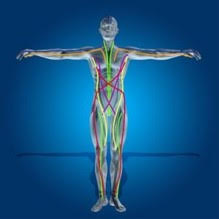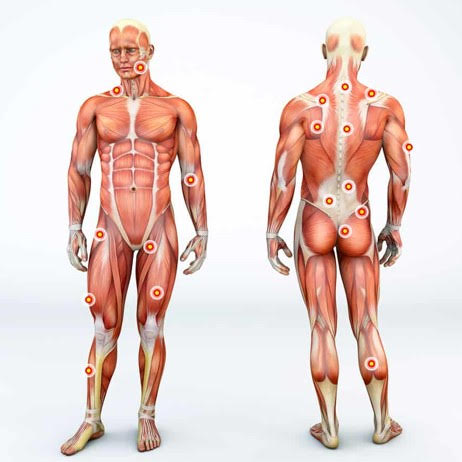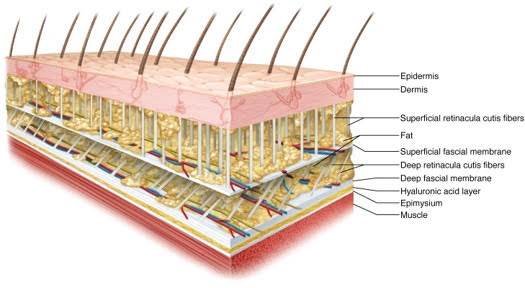You all know that everything in the body is connected, but structurally do you know how so? The clue maybe in the title!
The fascial system was once thought of as nothing more than a covering layer to hold the important tissues of our body in place. That may be one of it’s roles, but it does so much more than that.
The fascial system is a complex web like structure that runs throughout the body, allowing the body to function and move freely as one three dimensional object.

Function of Fascia
Fascia holds a vast amount of sensory receptors within it’s structure, they are responsible for proprioception (co-ordination of movements) and communication throughout the body. It allows us to move with energy efficiency, via a mechanism that works like a spring (catapult mechanism), as it lengthens it stores energy then recoils back to it’s original length. Fascia has the ability to absorb stress and tolerate strain (to a point), this allows us to move and perform exercise with grace (well, sometimes!)
The more stress fascia can tolerate, the lower our risk of pain and injury, so keeping our fascial system healthy is very important. Fascia also plays an important role in the regulation of our temperature (communicating with the receptors in our skin), and is a vital part of our immune system – allowing nutrients to pass through it to other bodily tissue such as muscle, and destroying harmful substances.
Fascial Chains
When looking at the fascial system from a movement point of view, there are specific links throughout the body. The links have been described by experts as fascial chains or sequences. They link to movements, for example the anterior sequence relates to forward movements and the posterior sequence to backward movements. There are many other sequences that spiral throughout the body, they help to create and control the dynamic movements that we are capable of creating.

Warning Signs and Pain
Fascia allows force to transmit from muscle to muscle, there are specific points within the fascia that have the greatest influence on the muscles in that region. If all these points are balanced movement will feel effortless, but when one area of fascia becomes dysfunctional this will put the whole system out of balance. This is when we start feeling pain. It’s easy to think the point of pain is where the problem is, however this is rarely the case. The fascial system has a vast amount of receptors within it (many more compared to muscle tissue), when you start getting pain at a point it’s a warning sign that something’s wrong in the system. This may have been caused by trauma, overuse, misuse, or disuse.

Looking After your Fascia
Structurally fascia is made up of superficial and deeper layers. It comes in the form of loose connective tissue which allows nutrients to pass through to other bodily tissue, and dense connective tissue which is very strong, a good example of this is the achilles tendon. As mentioned before, a really important function of the fascial system is it’s ability to move and allow movement. If it’s healthy, the layers of fascia will glide past each other, however if it becomes dysfunctional it will thicken and stiffen up. This will have an negative effect on the health of the tissue in the area and often have a knock on effect throughout the body. This is why it’s so important to look after your fascial system.
There are many ways for you to maintain a healthy fascial system, such as foam rolling and doing regular movement (yoga is great for the fascial system). At Optimal Movement we integrate a variety of treatment modalities, yoga classes, and rehabilitation plans that are aimed at keep you and your fascial system healthy.
If you have any questions or would like more information on this subject please get in touch.
On a personal note, I’ve seen how positive the effects of treatment to the fascial system can be, allowing someone who’s been in pain for years to walk out of the treatment room pain-free after just one or two sessions.
Joe – Team Optimal Movement
